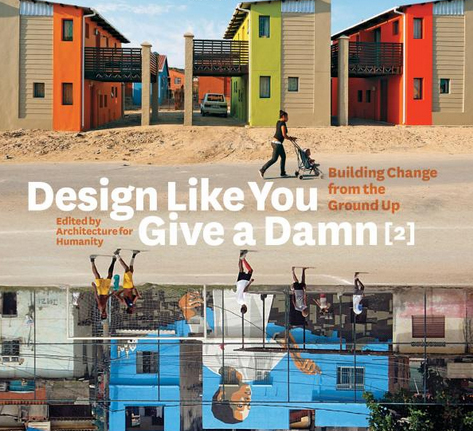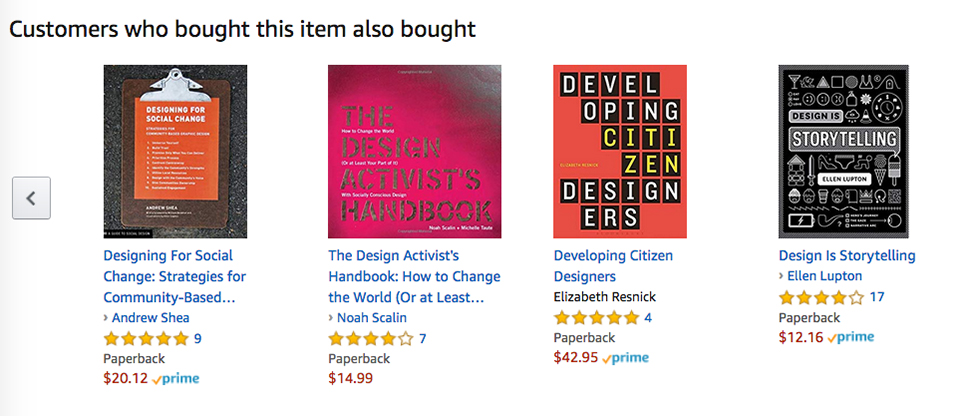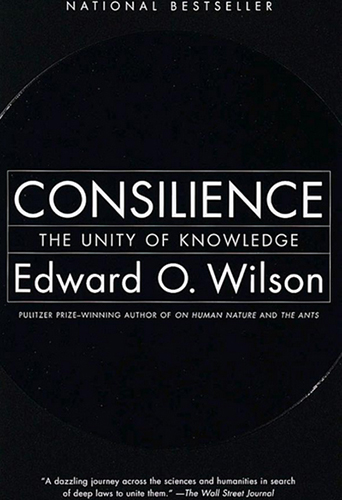David Stairs
It’s seemingly on every designer’s mind these days. No, not sex (although that might be a close second) but social design. How did a matter of collective conscience come to rival primordial drives?
Not long ago only cranks and fuzzy-headed idealists were talking about social design. To perform a service “pro bono” was to earn a little social capital in an otherwise expensive and ultimately self-destructive manner. Working for free was akin to what slaves did. Design professionals in the great consumer economy deserved better.

Things changed slowly. A few books appeared: Cameron Sinclair’s Design Like You Give a Damn, for instance, or David Berman’s Do Good Design, but for the most part we had business as usual, like AIGA’s Gain design/business conferences.
Admissions of the potential of cultural change were in the air. ICSID ran a series of “Interdesigns,” some of which wrestled with the limits of corporatism, allowing designers to put aside their day jobs for a couple of weeks and dream up solutions to social problems.
Conferences came and went, some with interesting titles like Changing the Change or Blunt. Attendees at these events wrestled with the differences between shareholders and stakeholders, proposing soft solutions to the Millennium Development Goals, destined to miss all their scheduled deadlines in our collective race to the bottom.
Problems with the environment got worse and worse, despite Rio, Kyoto, and a number of memos and concordats. People were willing to talk, but less willing to put their money down, counting on the environment’s ability to absorb more and more damage without complaining.
Thirty years after Our Common Future sustainability finally became a catch phrase, spoken by all but practiced by few. David Orr published his notions about “slow knowledge” while Europeans practiced a form of reaction to corporate franchised food with a “slow food” movement. But the world’s largest economy opted out of the environmental discussion altogether, unwilling to cooperate if it could not call the shots.
The design practice IDEO, self-styled pioneer of “human centered design,” created toolkits and .org divisions to promote their business, ostensibly through assistance to vulnerable communities. It remains to be seen if this enlightened self-interest really benefits have-nots, or only helps to expand corporate overseas markets.
Design Observer created Change Observer and, for a time, ran social enterprise retreats for “change leaders” using Rockefeller money, but since the death of Bill Drenttel DO has morphed into an appendage of the AIGA.
Design school programs around the world have promoted courses, projects, and “interventions” meant to expand their students’ social awareness and the school’s market base. Enough people were finally talking about social design to make it lucrative, at least for some educators.

A quick search of “social design” at Amazon reveals a growing number of soc-design titles— many actually anthologies of case studies run out of design school studios, while the Bloomsbury house, successor to British design publisher Berg, has been ramping up its social design book line.
Over the course of the last twenty years, design itself has expanded so dramatically, absorbing most everything in its path so to speak, that it’s beginning to be hard to differentiate it from social science or planning, anthropology, ethnography, theater, narrative storytelling— By the end of the first decade of the 21st century the great melting pot called design seemed poised to handle the thorniest social issues in a manner that could only have been dreamed about in the 1980s.
But “osmosis” is not the same as collaboration. Despite the periodicals and conferences, social initiatives and new curricula, all of the books touting social design’s growing accomplishments, and in spite of going on 30 years of the most recent iteration of the discussion (Victor Papanek, after all, is no longer current), it’s not possible to claim that design for the commonweal is yet a major force in the world.
More common, but not major.
Perhaps this has something to do with the deep-seated bias that, as many of my students like to put it, “a person still has to earn a living.” The accompanying implication that the best way to accomplish this is by being a corporate shill is easy to refute. Locked as it is in the perfidy of convention, it belies all the amazing possibilities of human imagination. And yet, like the common cold, it persists.
Who then owns social design? The simple answer is, “Everyone, and no one.” There is not yet an estimable figurehead, charismatic leader, or bespoke poster child for social design. There are numerous well-intentioned practitioners and academics riding a fairly safe small fashion wave of incremental advances, and a few commercial entities trying to use it as a means of boosting their overall market share. As educator and industrial designer Emily Pilloton laments in the recent social design documentary Digging the Suez Canal With a Teaspoon, “I think that the organizations that have commodified it (social design) so blatantly to their own benefit— it’s sort of the nature of the industry— we haven’t been able to shake that model, and I wish there was another way.”
But maybe there is another way. In the same film Oakland architect and design consultant Liz Ogbu talks about the importance of her design influences from outside the profession, and a number of designers, myself included, love to quote Ivan Illich, that deep well of social right-thinking and political skepticism toward the capitalist West.

An instance of outside-the-profession social influence in an institution might be Imagining America, “a thriving consortium of colleges, universities, and cultural organizations” founded at a 1999 White House Conference with the expressed intention “to claim engagement at the core of their professional identities.” For IA, public issues can be addressed through “participatory design.”
Not all members are necessarily designers, nor are all member institutions design schools, but this seems to be to the good. At the annual gathering in Chicago in October 2018, a meeting dedicated to Decarceration and Liberatory Futures, ex-convicts presented creative solutions to the prison industrial complex, alongside state legislative representatives, artists, designers, academics, and PhDs, lending substance to the argument that there’s strength in diversity when tackling intractable social problems. Many of the IA presenters in Chicago were members of minorities, perhaps a sign of the times in the Era of Trump and prison-for-profit schemes, but it was an instance of conference diversity one would like to see repeated at design confabs.

Perhaps exo-design organizations like Imagining America, and others dedicated to finding the way forward by addressing the future through a collective approach to knowledge, can help design rediscover that “other way.” It would not be surprising to find that design, the profession its practitioners have come to consider culture’s “master discipline,” depends upon what EO Wilson has termed “consilience” or the interdependence of knowledge, to crack the social design dilemma.
Then again, maybe it’s not so much a dilemma as a simple change of perspective. I’ve already referred to design’s rapacity when it comes to absorbing social science research techniques. Maybe all that’s needed is a little more humility. After all, it wouldn’t be the first time cooperation has trumped competition in the pursuit of social welfare!
David Stairs is the founding editor of the Design-Altruism-Project










